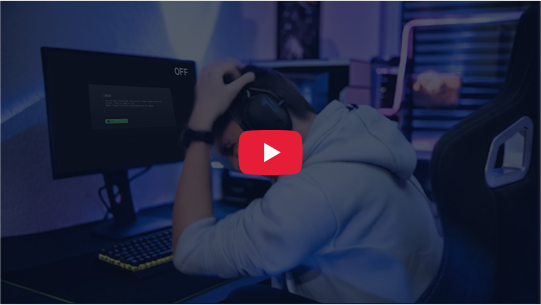What is a Good Download Latency | A Complete Guide for Gamers
This article talks about the question of what is a good download latency and how it can be achieved.
Introduction:
Since the introduction of the original Nintendo or even the Atari, gaming, in general, has advanced significantly. On console systems, gaming once allowed for family and solitary play, but today's players connect online to play multiplayer games with strangers and digital pals. It is more crucial than ever to have a solid internet connection for contemporary online gaming.
Whether you play real-time strategy games, racing games, or first-person shooter (FPS) games, you need high internet rates to transport all the data necessary to maintain fluid gameplay. However, you might be having latency issues if there is a delay between pushing a button on your keyboard or game controller and something happening in the game. This article aims to answer the question of what is a good download latency and some basics.
What is Latency?
In the realm of evolving computer networks & blooming information technology, latency represents the time taken for data to travel from its source to its destination and back. It is commonly measured in milliseconds (ms) & indicates the round-trip duration for a data packet between two points. To be more precise, latency (or ping) is the time it takes for a single data packet to go from your device to a destination & back.
Lower latency is preferred as it enables faster communication & reduces the delay between actions and outcomes. Higher latency can result in noticeable delays, increased response times, and a less smooth user experience. Network engineers and developers employ techniques such as optimizing configurations, using faster protocols, and leveraging content delivery networks (CDNs) to reduce latency.
What is a Good Download Latency?
A good network both great for gaming and browsing the internet should have these specs:
- A mean opinion score of at least 2.5 (it is a straightforward one-to-five ranking of its overall quality.)
- Latency of 200ms or less
- Packet loss of 5% or less within 10 minutes
- Below 15% jitter
In general, a latency (or ping) of 40 to 60 milliseconds (ms) or less is considered acceptable, whereas a speed of more than 100 ms will typically result in a significant lag in gaming. You want the ping time between your gaming device & the internet server to be as near to 0ms as feasible, as this ensures that responses between devices happen quickly.
How to get Good Download Latency?
Now you know what is a good download latency number but how to get it? First, there are numerous causes of latency problems in video games. Here are a handful of them:
Internet connection: Your internet connection type may affect whether you experience low or excessive latency. Typically, internet services like DSL, cable, & fiber offer fast enough speeds to essentially eliminate lag in online gaming.
Network Hardware: Your connection may be weakened by an old router. This frequently happens when a lot of users are simultaneously logged onto your router. Gaming latency may be reduced by switching to a new router designed for gaming and if paired with a network booster device like Hyperev, you will get insane results.
Geographical location: Latency may be impacted by the physical distance between your internet router and the server. The length of time it takes for data to travel between you and the server will be shortened, so if you live in Chicago, for instance, you might choose a server located in the Chicago metropolitan region rather than New York.
To get good latency numbers, here are our suggestions to deal with these problems leading to low latency:
1. Any unneeded programs or apps should be closed. Your internet bandwidth may be being consumed by other heavy apps, such as music or video software, which could slow down your gameplay.
2. To find out your ping before playing, run an internet speed test before replacing any of your hardware.
3. Use an Ethernet cable or other connected connection. A more dependable signal for gaming may be offered by a direct connection from your router to your gaming device. If there are several Wi-Fi users in your house, your connection can be poor. Having a connected connection could improve performance and reduce lag.
4. Keep a safe distance from the router. You can have a slower connection if your router is on the other side of the house & you're trying to play a game. To strengthen the connection while gaming, try moving closer to the router, or buy a WiFi extender to extend the internet to more rooms in the house.
5. Invest in a gaming booster that will bypass slow servers and busy routes to the target game server. We recommend using Gearup Booster which is coupled with super fast servers placed all around the world and also has cross-platform support.
Wrapping up:
In conclusion of our take on the question of What is good download latency, we can state that a good download latency is characterized by a low and responsive value that ensures an efficient and smooth download experience. For regular internet activities, such as web browsing and file downloading, a latency below 100 milliseconds (ms) is generally considered good. This level of latency provides a responsive user experience with minimal noticeable delays, enabling users to access & retrieve data efficiently.
However, in scenarios where real-time interactions are vital, such as online gaming or video conferencing, a lower download latency is desired. Latency below 50 ms or even below 20 ms is often regarded as excellent in these cases. Investing in a network booster like Gearup Booster may be your best investment when dealing with latencies.


